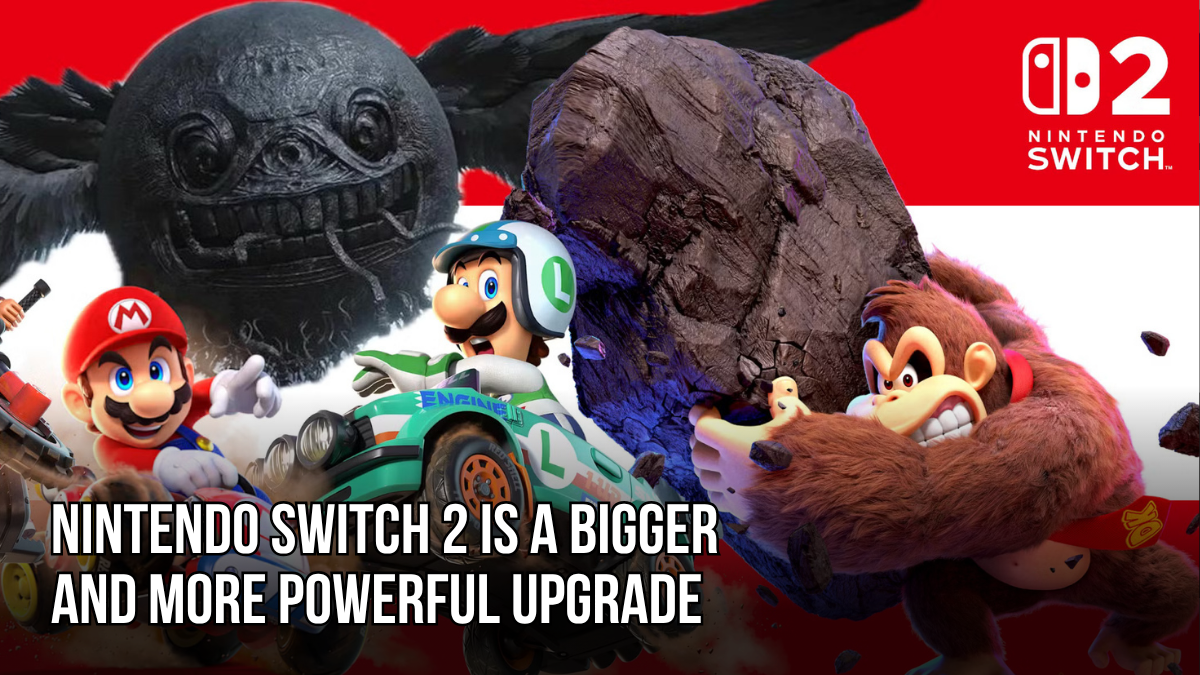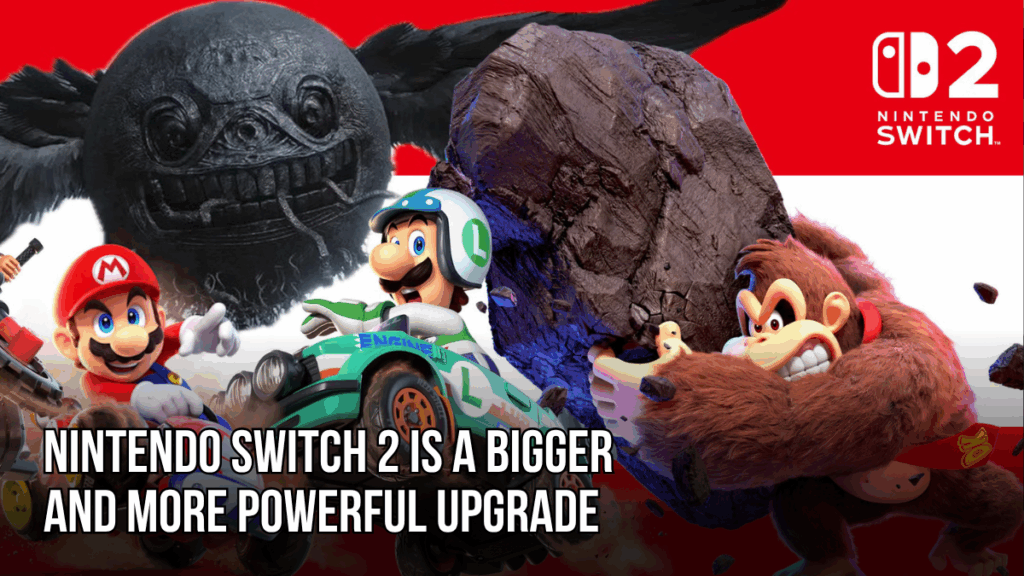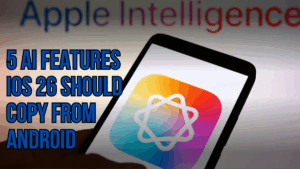Nintendo has officially revealed the Nintendo Switch 2, and while it’s not a revolutionary departure from its predecessor, that’s not necessarily a bad thing. In fact, it may be the smartest move Nintendo could make right now.

Following months of speculation, the Japanese gaming giant confirmed the existence of the Switch 2 on January 16, 2025. Reactions were mixed many fans were underwhelmed by the minimal presentation and the apparent simplicity of the new system. But beneath the surface, this straightforward approach may be the exact strategy Nintendo needs to ensure another massive success.
In this article, we’ll break down why the Nintendo Switch 2’s “safe” evolution makes sense, how it avoids past mistakes, and why it positions Nintendo perfectly for the future of hybrid gaming.
Quick Summary: Nintendo Switch 2 Key Takeaways
Feature |
Details |
|---|---|
Launch Announcement |
Officially confirmed on January 16, 2025 |
Form Factor |
Similar hybrid design; larger, sleeker, and more powerful |
Core Strategy |
Iterative upgrade rather than revolutionary redesign |
Technology |
Modernized chipset (likely Nvidia T239), enhanced graphical capabilities |
Naming and Branding |
Clear successor to Switch avoids Wii U-style confusion |
Official Website |
Nintendo Plays It Safe For Good Reason
Nintendo’s decision to keep the Switch 2 close to its predecessor’s design may seem conservative, but history shows it’s a move rooted in valuable lessons.
Avoiding Another Wii U Disaster
Back in 2011, Nintendo launched the Wii U after the massive success of the Wii. The problem? Poor communication and branding. Many consumers didn’t understand if the Wii U was a new console or just an accessory. Confusion over the new tablet-style controller and the underwhelming marketing strategy led to one of the company’s worst-performing consoles, with only 13.5 million units sold.
With the Switch 2, Nintendo is ensuring that history doesn’t repeat itself. The branding is clearer, the form factor is instantly recognizable, and the value proposition is evident: this is a direct, powerful successor to a console that sold nearly 150 million units.
No Gimmicks, Just an Improved Switch
Critics may lament the lack of flashy new gimmicks, but that simplicity is part of what makes the Switch 2 so appealing. Nintendo isn’t chasing the latest trends for novelty’s sake. Instead, it’s doubling down on what already works and improving on it in practical, user-focused ways.
What’s Different in the Switch 2?
-
Larger Display: Offering a bigger screen for more immersive gameplay.
-
Better Internals: A rumored custom Nvidia T239 processor ensures modern performance and improved visuals.
-
Enhanced Portability: Despite its larger size, the Switch 2 maintains its hybrid versatility.
-
New Input Methods: Features like mouse support hint at more diverse control options.
These improvements are focused on performance, visual fidelity, and user comfort all without sacrificing what made the original Switch great.
Why a “Safe Bet” Is Smart Right Now
The Power of Nostalgia and Simplicity
Many gamers have strong emotional connections to the original Switch. From its 2017 debut, it brought a revolutionary hybrid design that redefined what portable gaming could be. But as competitors like the PlayStation 5 and Xbox Series X/S pushed the technical boundaries, the aging Switch hardware began to show its limits.
The Switch 2 offers a way to bring back that magic, now with fewer compromises. It reawakens the excitement of playing console-quality games on the go this time with smoother frame rates, sharper visuals, and better battery life.
The Competition Can’t Compete (Yet)
While handheld gaming PCs like the Steam Deck, ASUS ROG Ally, and Lenovo Legion Go are rising in popularity, none have matched the ease-of-use and game library integration of the Switch ecosystem. Most of these devices are expensive, complicated, and aimed at tech-savvy users.
Meanwhile, Nintendo’s approach still resonates with casual gamers, families, and core Nintendo fans alike. The hybrid model is still a blue ocean that competitors haven’t effectively entered.
Nintendo’s Blue Ocean Strategy Remains Intact
Nintendo has long operated under a “Blue Ocean” strategy creating uncontested market space rather than fighting in existing markets. The Wii, DS, and Switch are all examples of innovation outside the traditional graphics arms race between PlayStation and Xbox.
But what happens when others begin to crowd that blue ocean?
Are Handheld PC Competitors a Threat?
Not quite. Devices like the Steam Deck have niche appeal but lack Nintendo’s unified ecosystem, first-party titles, and intuitive UI. The Switch 2 can retain mainstream dominance as long as it keeps things simple, accessible, and affordable.
What About Sony and Microsoft?
Microsoft has confirmed it’s exploring a handheld Xbox, while rumors suggest Sony is developing a portable PlayStation 5. If either enters the hybrid market seriously, Nintendo may need to rethink its strategy for the Switch 3 but not yet.
April’s Nintendo Direct: What Comes Next
Nintendo’s upcoming Nintendo Direct on April 2 is expected to reveal much more about the Switch 2. The company must demonstrate that the performance improvements are real and substantial.
What Fans Need to See
-
Side-by-side gameplay comparisons with the original Switch
-
First-party titles that showcase new hardware capabilities
-
Third-party developer support that leverages the upgraded chipset
-
Battery life improvements and docked performance benchmarks
Without these confirmations, excitement may fade. But early reports are promising Digital Foundry has already run simulations based on the T239 chip, suggesting the Switch 2 could rival last-gen consoles even in handheld mode.
Looking Ahead: What Comes After the Switch 2?
Eventually, Nintendo will face a more crowded portable gaming market. When the time comes for a Switch 3, a more transformative leap may be required. But for now, there’s no urgent need to abandon a concept that continues to thrive.
Key Future Considerations
-
Nintendo must maintain backward compatibility to protect its massive existing game library.
-
The eShop ecosystem must evolve to support more modern services like cross-save, cloud gaming, and social integration.
-
If Sony or Microsoft release powerful hybrids, Nintendo must differentiate even further with unique hardware, software, or services.
Frequently Asked Questions (FAQs)
1. When is the Nintendo Switch 2 release date?
A. Nintendo has not yet announced an official release date, but the full reveal is expected during the Nintendo Direct on April 2, 2025.
2. Is the Switch 2 backward compatible?
A. Nintendo has not confirmed this yet. However, fans widely expect backward compatibility with Switch 1 titles to be included.
3. What chipset does the Switch 2 use?
A. Leaks and industry analysis suggest the Switch 2 will use Nvidia’s custom T239 processor, offering significant performance gains over the original.
4. Is the Switch 2 more powerful than the Steam Deck?
A. While not directly comparable, the Switch 2 is expected to offer similar or slightly lower performance than the Steam Deck, but with better power efficiency and ease of use.
5. Will the Switch 2 support new control methods?
A. Yes. Early information suggests features like mouse input support may be introduced.
Official Resources
-
Nintendo Website: https://www.nintendo.com
-
Nintendo Newsroom: https://www.nintendo.com/newsroom
-
Digital Foundry Hardware Analysis: Eurogamer.net
For More Information Click Here


